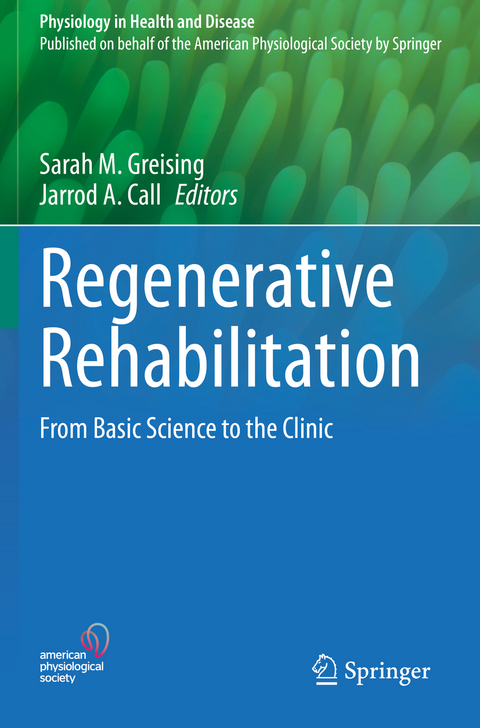
Regenerative Rehabilitation
Springer International Publishing (Verlag)
978-3-030-95886-2 (ISBN)
This contributed volume presents the current state of research on regenerative rehabilitation across a broad range of neuro- and musculoskeletal tissues. At its core, the primary goal of regenerative rehabilitation is to restore function after damage to bones, skeletal muscles, cartilage, ligaments/tendons, or tissues of the central and peripheral nervous systems. The authors describe the physiology of these neuro- and musculoskeletal tissue types and their inherent plasticity. The latter quality is what enables these tissues to adapt to mechanical and/or chemical cues to improve functional capacity. As a result, readers will learn how regenerative rehabilitation exploits that quality, to trigger positive changes in tissue function.
Combining basic, translational, and clinical aspects of the topic, the book offers a valuable resource for both scientists and clinicians in the regenerative rehabilitation field.
Sarah M. Greising
School of Kinesiology
University of Minnesota
Minneapolis
Minnesota
USA
Jarrod A. Call
Department of Kinesiology
University of Georgia
Athens
Georgia
USA
Chapter 1. Historical Perspectives of Regenerative Rehabilitation: Recovering and Restoring Functional Capacity.- Chapter 2. Considerations for Small Animal Physical Rehabilitation.- Chapter 3. Regenerative Rehabilitation for Nonlethal Muscular Dystrophies.- Chapter 4. Regenerative Rehabilitation for Duchenne Muscular Dystrophy.- Chapter 5. Regenerative Rehabilitation in Sarcopenia, Dynapenia and Frailty.- Chapter 6. Pathophysiology of Volumetric Muscle Loss and Targets for Regenerative Rehabilitation.- Chapter 7. Novel Cell-Based Therapeutics for Diseases of the Heart and Skeletal Muscle.- Chapter 8. Regenerative Rehabilitation Strategies for Complex Bone Injuries.- Chapter 9. Biomaterials in Connective Tissue Regeneration and Rehabilitation.- Chapter 10. Ultrasound Stimulation of Tendon Healing: Current Strategies and Opportunities for Novel Therapeutic Approaches.- Chapter 11. Mechanical Stimulation as Both the Cause and the Cure of Tendon and Ligament Injuries.- Chapter 12. Methods to Enhance the Beneficial Effects of Exercise in Individuals with Spinal Cord Injuries.- Chapter 13. Emerging Approaches for Regenerative Rehabilitation Following Traumatic Brain Injury.
| Erscheinungsdatum | 04.06.2023 |
|---|---|
| Reihe/Serie | Physiology in Health and Disease |
| Zusatzinfo | X, 459 p. 55 illus., 49 illus. in color. |
| Verlagsort | Cham |
| Sprache | englisch |
| Maße | 155 x 235 mm |
| Gewicht | 708 g |
| Themenwelt | Studium ► 1. Studienabschnitt (Vorklinik) ► Physiologie |
| Naturwissenschaften ► Biologie | |
| Schlagworte | Injury • Recovery • Rehabilitation • Repair • Sceletal Muscle • Tendon • Trauma |
| ISBN-10 | 3-030-95886-8 / 3030958868 |
| ISBN-13 | 978-3-030-95886-2 / 9783030958862 |
| Zustand | Neuware |
| Haben Sie eine Frage zum Produkt? |
aus dem Bereich


